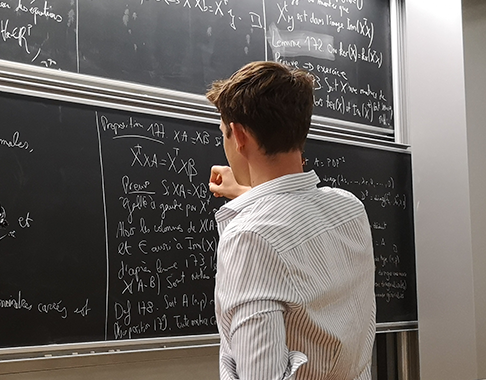Physics of markets
Teacher
ECTS:
3
Course Hours:
24
Tutorials Hours:
0
Language:
English
Objective
This course offers a mechanistic and coherent vision of the financial markets. It explains how observable price dynamics, in particular the difficulty in predicting prices, result from the interaction between the strategies used by exchange agents.
To do so, it covers a wide range of topics and provides a way of looking at microscopic financial dynamics and general principles of statistical learning applied to markets.
Planning
- Studying market phenomenology with a Big Data approach
- Consider trading strategies as tools for partial measurement of price dynamics
- Understand how stockbrokers learn to use their strategies,
- Build models of agents and study how their interaction tends to make predictability disappear
References
- Cont, Rama. "Empirical properties of asset returns: stylized facts and statistical issues." Quantitative Finance 1 (2001): 223-236.
- Freeman, John D. "Behind the smoke and mirrors: Gauging the integrity of investment simulations." Financial Analysts Journal 48.6 (1992): 26-31.
- Chakraborti, Anirban, et al. "Statistical mechanics of competitive resource allocation using agent-based models." Physics Reports 552 (2015): 1-25.
- Bouchaud, Jean-Philippe, J. Doyne Farmer, and Fabrizio Lillo. "How markets slowly digest changes in supply and demand." Fabrizio, How Markets Slowly Digest Changes in Supply and Demand (September 11, 2008) (2008).










